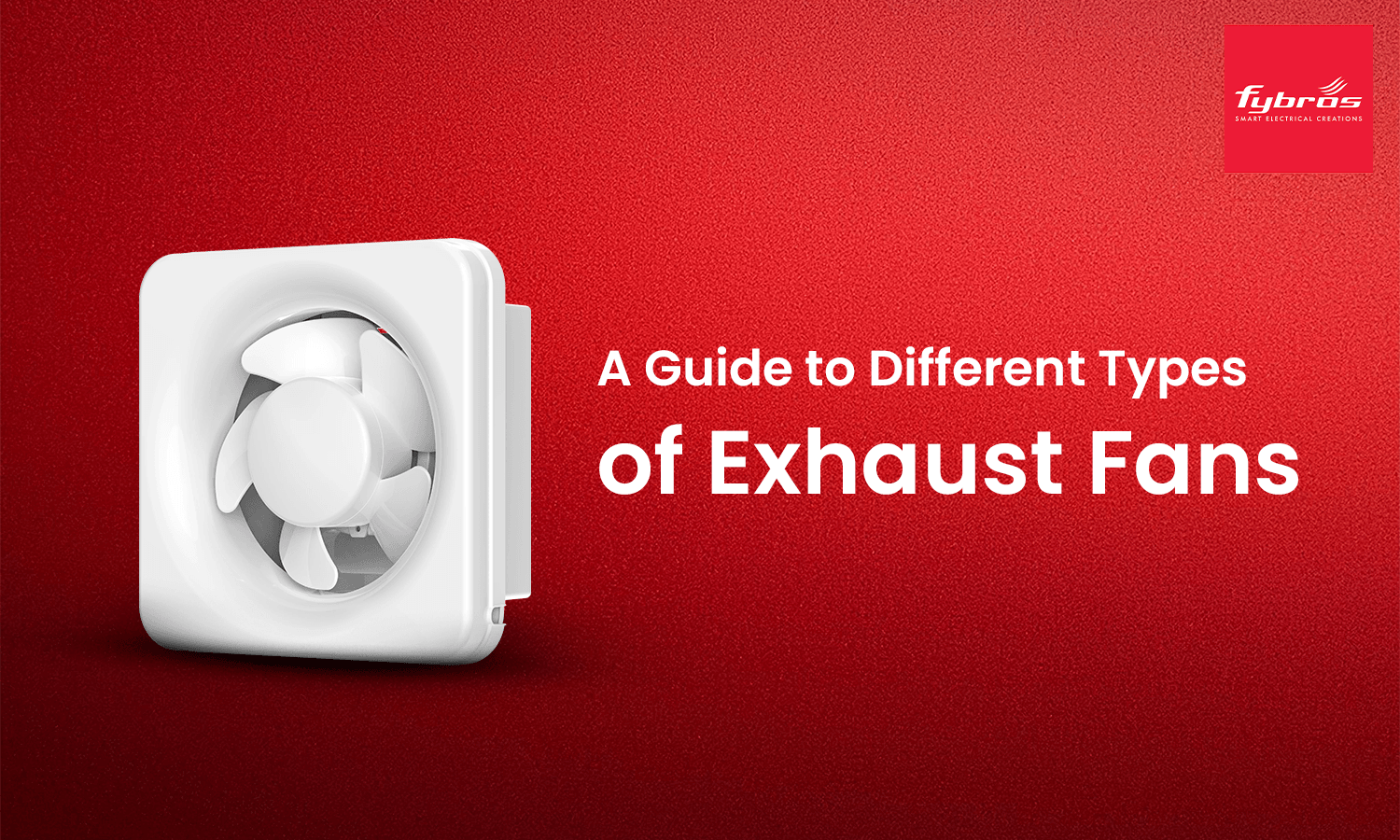
When selecting an exhaust fan, many homeowners assume all fans are the same. But in reality, types of exhaust fans vary by room, mounting, and performance. Picking the right one can win you fresher air, lower moisture, and quieter operation. In this blog, we’ll break down all the different types of exhaust fans, show which models by Fybros match each, and teach you how to choose and maintain them.

Here are the common varieties:
Window exhaust fans: Fit into window frames to push air outdoors
Wall-mounted exhaust fans: Fixed on a wall, ideal for rooms with external walls
Ceiling-mounted exhaust fans: Installed in ceilings or false ceilings
Inline / duct exhaust fans: Placed inside ducts to boost ventilation across multiple spaces
Each type suits a different space layout, bathroom, kitchen, corridor, or laundry area.
Kitchens demand heavy ventilation. You’ll often see wall-mounted kitchen exhaust fans or window exhaust fans used above stoves or near windows. Fybros’ Ventflo Exhaust Fan is one such model, offering up to 1350 RPM, 35 W power, and 280 cmm air delivery for compact kitchens. For stronger use, the Exflo Plus Exhaust Fan delivers 2350 RPM, 350 cmm airflow, and 40 W power, suitable for smoky or open kitchens.
In bathrooms, moisture control and odor removal matter most. Ceiling-mounted exhaust fans for bathroom or small exhaust fans for bathroom options are common. Fybros’s Lush Exhaust Fan delivers 2200 RPM at 18 W with a compact 100–150 mm sweep, great for small bathrooms, one of the compact types of exhaust fans. The Venti Air Exhaust Fan offers a 200 mm sweep, 1350 RPM, and 35 W power, ideal for bathrooms requiring stronger airflow.

Let’s examine why a good exhaust fan matters, and the features to look for:
Effective fans push stale air, smoke, and moisture, keeping rooms fresh. Models like Ventflo and Exflo are built for this.
A well-designed motor and balanced blades keep sound levels low, critical in bathrooms or near bedrooms. Fybros has a lot of types of exhaust fans models.
Always check airflow (cmm or CFM) and match sweep to room size. A 200 mm fan should deliver about 400–450 cmm or more.
Look at the power draw. Lush uses only 18 W at 2200 RPM.
Shutters prevent backflow when off; bird screens stop insects. Models like Exflo Plus include robust guards.
Detachable fronts and simple mounting help. Many types of exhaust fans from Fybros come with front panels for cleaning.
Choosing among the types of exhaust fans depends on your room layout, airflow needs, noise tolerance, and energy budget. From kitchen exhaust fans like Ventflo and Exflo to bathroom exhaust fans like Lush and Venti Air, Fybros offers models for every use case. Prioritize airflow, power draw, noise, and installation ease, and your ventilation will serve beautifully for years.
1. How many CFM should my exhaust fan be?
Aim for about 5–10 air changes per hour. For a small bathroom (10 sq ft), a fan with 100–150 CFM is plenty. A larger kitchen may require 300+ CFM.
2. How do you calculate exhaust fan capacity?
Multiply the room’s volume (length × width × height) by the desired air changes per hour, then divide by 60. That gives the required CFM.
3. Can I use an exhaust fan in a closed room?
Only if the fan vents outside via ducting. Without an external path, it recirculates air and offers limited benefit.
4. Can I use an exhaust fan overnight?
Yes—many models are built for continuous operation. Just choose a quiet model and maintain it well to avoid wear.